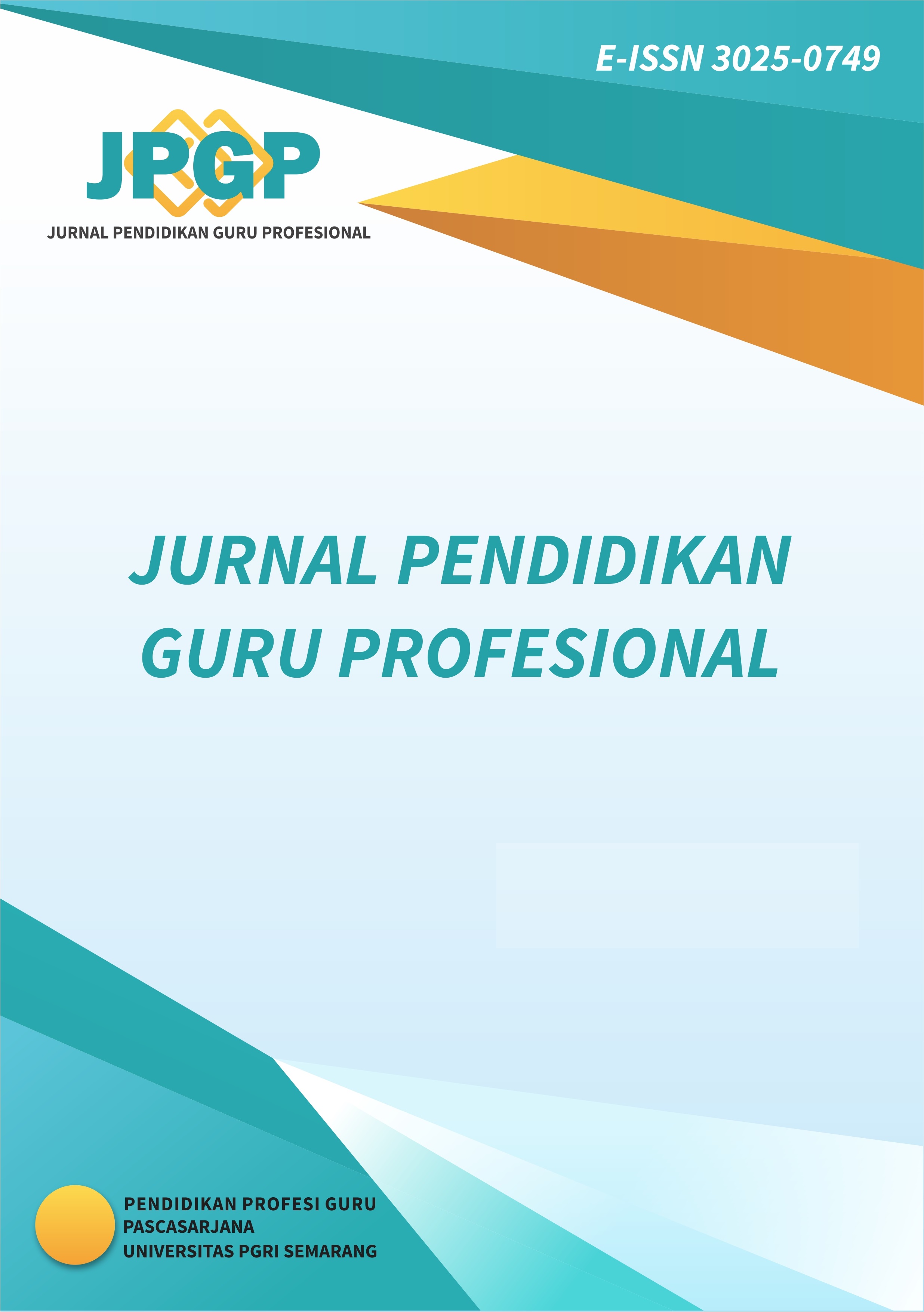Understanding by Design (UBD) pada pembelajaran berbasis Problem Based Learning (PBL) berbantuan LKPD untuk meningkatkan kemampuan koneksi matematis siswa
DOI:
https://doi.org/10.26877/jpgp.v2i2.1632Keywords:
Understanding by design, mathematical connection abilities, students worksheetAbstract
During the implementation of Field Experience Practices (PPL) at SMA Negeri 10 Semarang, researchers obtained data that students at the high school still experienced several obstacles and deficiencies in the learning process, understanding learning objectives, and relating the material to other things. Using a good learning model will help students connect concepts both in mathematics and in other fields. The aim of this research is to determine the increase in students' mathematical connection abilities in Understanding by Design (UbD) with problem-based learning (PBL) assisted by LKPD. This research uses classroom action research (PTK). The research procedure used consists of several stages, namely problem diagnosis, planning, action, observation, data analysis, and reflection. The sample in this research was class X-9 at SMAN 10 Semarang. The research results showed that in cycle I the average student learning outcome was 72.08 and classical completeness was only 44.44%. This is certainly very far from ideal. In cycle II the average learning result for class X-9 was 80.44 and classical completeness increased to 66.67%. Even though it has increased, it has not reached the ideal target, so treatment is needed in the third cycle. In cycle III the average learning outcome was 86.89 and classical completeness increased to 88.89%. This was said to be complete and successful. Thus, UbD with PBL assisted by LKPD can improve students' mathematical connection abilities in learning.
References
Aprilia, R. N. (2020). Kajian Ketersediaan Sarana dan Prasarana Pendidikan Dasar (SD/MI) dan Menengah Pertama (SMP/MTs) di Kecamatan Sambong Kabupaten Blora Tahun 2020 (Implementasi dalam Pembelajaran Geografi Kelas XI pada Materi Kualitas Penduduk dan Indeks Pembangunan Manusia).
Astuti, P., Hartono, Y., Bunayati, H., & Sriwijaya, U. (2017). Pengembangan lks berbasis pendekatan pemodelan matematika untuk melatih kemampuan koneksi matematis siswa SMP Kelas VIII. Jurnal Pendidikan Matematika, 11(2), 61–77.
Badjeber, R. & S. Fatimah. (2015). Peningkatan Kemampuan Koneksi Matematis Siswa SMP Melalui Pembelajaran Inkuiri Model Alberta. Jurnal Pengajaran MIPA, 20(1): 18-26.
Bowen, R. S. (2017). Understanding by Design. Vanderbilt University Center for Teaching. Retrieved [todaysdate] from https://cft.vanderbilt.edu/understanding-by-design/.
Gloria, R. Y., & Indriyanti, D. R. (2019). Applying formative assessment through understanding by design (UbD) in the lecture of plant physiology to improve the prospective teacher education students’ understanding. Journal of Turkish Science Education, 16(3), 350-363.
Mulyasari, E., Yuliani, Y., & Dewi, S. K. (2020). Keefektifan Lembar Kegiatan Peserta Didik (LKPD) Berbasis Guided Inquiry pada Materi Pertumbuhan dan Perkembangan uUntuk Melatihkan Keterampilan Argumentasi. Berkala Ilmiah Pendidikan Biologi (BioEdu), 9(2), 186–192. https://doi.org/10.26740/bioedu.v9n2.p186-192
Niam, M. A., & Asikin, M. (2020). The Development Of Science, Technology, Engineering, And Mathematics (STEM)-Based Mathematics Teaching Materials To Increase Mathematical Connection Ability. MaPan, 8(1), 153. https://doi.org/10.24252/mapan.2018v8n1a12
Nasrudin, N., & Maryadi, M. (2019). Manajemen Sarana dan Prasarana Pendidikan dalam Pembelajaran di SD. Manajemen Pendidikan, 13(2), 15-23.
Rahima, S., Zulkarnaen, Z., & Chrisnawati, Z. (2022). Analisis Karakteristik Peserta Didik Untuk Mencapai Pembelajaran Bermakna Kelas X-6 SMA Negeri 1 Samarinda. In Prosiding Seminar Nasional Pendidikan Profesi Guru (Vol. 3, pp. 56-60).
Rosnaeni, R., Sukiman, S., Muzayanati, A., & Pratiwi, Y. (2022). Model-Model Pengembangan Kurikulum di Sekolah. Edukatif: Jurnal Ilmu Pendidikan, 4(1), 467-473.
Seidel, T., Schnitzler, K., Kosel, C., Stürmer, K., & Holzberger, D. (2021). Student characteristics in the eyes of teachers: Differences between novice and expert teachers in judgment accuracy, observed behavioral cues, and gaze. Educational Psychology Review, 33, 69-89.
Sholekah, F. F. (2020). Pendidikan karakter dalam kurikulum 2013. Childhood Education: Jurnal Pendidikan Anak Usia Dini, 1(1), 1-6.
Sujana, I. W. C. (2019). Fungsi dan tujuan pendidikan Indonesia. Adi Widya: Jurnal Pendidikan Dasar, 4(1), 29-39.
Wiggins, G., & McTighe, J. (2005). Understanding by design. Ascd. Access from: https://www.edutopia.org/sites/default/files/resources/stw-normal-park-normal-understanding-by-design.pdf
Downloads
Published
Issue
Section
License
Copyright (c) 2025 Jurnal Pendidikan Guru Profesional

This work is licensed under a Creative Commons Attribution-NonCommercial-ShareAlike 4.0 International License.









